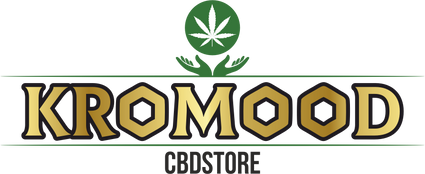
What relationships exist between THC and other cannabis molecules?
Cannabis is a complex plant that contains more than 100 substances called cannabinoids. Among these cannabinoids, Δ-9-tetrahydrocannabinol (THC) and cannabidiol (CBD) are best known. However, there are strict regulations when it comes to THC. We will give you the different relationships that can exist between this molecule and the rest of the other molecules.
THC, a unique compound with specific effects
THC is the only psychoactive compound found naturally in the cannabis plant. When consumed, it binds to cannabinoid receptors present mainly in the brain, thus influencing the functioning of different mechanisms. It is this bond that causes the “high” associated with cannabis consumption. THC is present in large quantities in marijuana, unlike hemp which mainly contains CBD.
It should be noted that because THC causes psychoactive effects, it is subject to strict regulations. We cannot say that it is not consumed, because it is present in most cannabis products. However, you won't be able to find THC-only products. It is therefore not possible to find THC flowers, THC resins or even THC oils due to its ban.
However, it should be noted that the compound is present in many cannabis products. More concretely, its presence is limited to a given rate depending on the country. Thus, THC is authorized in cannabis products at a maximum of 0.3% in certain countries or 0.2% in other countries. This rate is variable and is fixed depending on the country.
Marketers of cannabis products must therefore ensure that the products they market do not have a THC level higher than that of the regulations. Kromood always makes sure to respect these rules which have been defined by the different states to legalize the use and consumption of hemp-based products.
CBD: The non-psychoactive compound
CBD is authorized in many countries. Those in which it is not yet there cannot last. It has no psychoactive effects. This is why it is authorized for consumption. Its chemical structure is similar to THC, but the arrangement of atoms is different, giving it distinct chemical properties. CBD interacts with other elements in the body linked to well-being. It is often used because of its potential medicinal properties, including to treat arthritis, Crohn's disease, diabetes and multiple sclerosis. With CBD, you can manage stress and anxiety effectively.
Interaction between THC and CBD
Interestingly, THC and CBD can interact with each other. Some research shows that CBD may modulate the effects of THC. For example, in the presence of CBD, the psychoactive effects of THC could be attenuated.
Furthermore, in CBD products, there is generally the presence of THC in minimal quantities. Rarely, CBD is found in a given form without the presence of THC. Its presence in CBD products does not exceed the authorized level. Kromood offers you CBD products that contain THC. But Kromood products respect the authorized rate in each country. You therefore have the possibility to buy your CBD products on the Kromood Shop.
Relationship between THC and THCV, THCP and HHC
There are father and son relationships between several cannabinoids. It should be noted that not all molecules of the cannabis plant are extracted from it. Some of them are obtained by syntheses. They are synthesized in the laboratory. Researchers and scientists often use natural molecules from the cannabis plant to synthesize other molecules.
This therefore creates a relationship between natural molecules and synthetic molecules. To begin with, HHC is a synthetic compound. It is also present in tiny quantities in certain cannabis plants. However, to have it in reasonable quantity and meet consumer needs, it is synthesized. The HHC molecule therefore comes from that of THC. There is therefore a relationship between these two cannabinoids.
As for other molecules like THCV and THCP, there is also a relationship between them and THC. You just have to look at their chemical formula to realize that they all contain THC at the base. The simple difference is that these molecules do not have psychoactive effects similar to those of THC. This is why they are not banned in most countries.
Since there are no legal THC products, you can rely on derivatives of this molecule to benefit from some of its effects. If you are looking for products based on these synthetic molecules, Kromood has what you need. Do not hesitate to visit its CBD Shop to discover the proposals.
Other cannabinoids: A rich diversity
Besides THC and CBD, cannabis contains many other cannabinoids such as HHC, H4CBD, H3CBN, HHCP, HHCV, HHCO, CBN, CBG, etc. Each of these cannabinoids has its own properties and can interact differently with THC. For example, CBN is known for its sedative effects, while CBG might have anti-inflammatory properties.
Legal and medical implications
The legality of THC varies from country to country. In many countries, THC is classified as a psychotropic substance due to its psychoactive effects. However, some States do not have a position on the. In the latter, consumers can use the products without major risks. It would be best to opt for legal cannabis products that are certified by studies as not being dangerous.

 THX Flowers
THX Flowers
 THX Hash
THX Hash
 Delta-9
Delta-9
 Mushroom
Mushroom
 10-OH-HHC
10-OH-HHC
 CBD
CBD
 Nicotine Pouches
Nicotine Pouches
Leave a comment